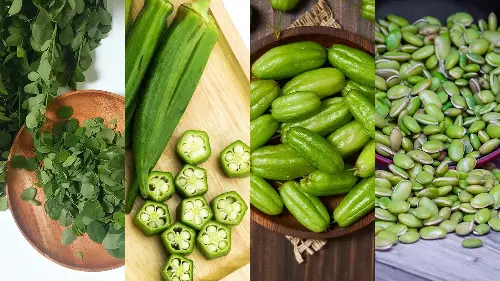
MANILA, Philippines – When it comes to Filipino cuisine, the spotlight often shines on common ingredients like garlic (bawang), onion (sibuyas), tomato (kamatis), ginger (luya), water spinach (kangkong), and more. But beyond these is a treasure trove of lesser-known yet highly nutritious and equally delicious Filipino ingredients waiting to be utilized more!
Rappler asked readers to share their favorite underrated Filipino ingredients. Here are the top 10 ingredients mentioned by ranking, and what makes them so special.
Malunggay (or moringa)
It’s the Philippines’ favorite superfood! Topping the list is malunggay, also known as moringa and called the “tree of life” or “miracle tree.”

Known for its high nutritional value, this common plant is packed with vitamins (vitamin C, beta-carotene), minerals, and antioxidants, with its leaves typically used in soups like sinigang, tinola, and utan bisaya, a vegetable soup from the Visayas region.
It is traditionally used to relieve pain, ulcers, liver disease, heart disease, cancer, and inflammation, among others. Many consume it in whole leaf form, but others also ingest it as a powder used in smoothies, tea, pandesal, and other pastries. It’s also given to lactating mothers to help boost milk supply.
Native to the Indian subcontinent, malunggay (moringa oleifera) has thrived in the Philippines due to its adaptability to tropical climates and is widely cultivated across the country, especially in rural areas, as a staple in household gardens.
Okra
We hated this polarizing vegetable as kids, but many of us have grown to love it! The okra — believed to have been introduced to the Philippines centuries ago — is now a common Filipino vegetable cultivated nationwide, especially in lowland areas.
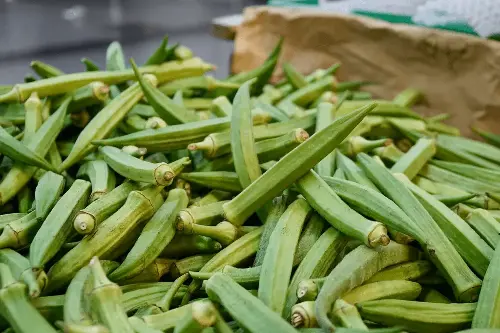
Also known as ladyfinger, okra is valued for its versatility and is prepared in various ways, like in sinigang, the Ilokano vegetable stew pinakbet with bagoong, paksiw na bangus, or as is — steamed or boiled and served with patis (fish sauce) or bagoong. Its slimy texture helps thicken soups and stews.
Batwan
The third most mentioned ingredient is the sour batwan (or batuan) fruit indigenous to the Philippines and predominantly found in the Western Visayas region, especially on the Negros and Panay islands.
Batwan is primarily used as a souring agent in regional dishes, like in the Ilonggo beef soup kansi, in paksiw na isda, or even in sinigang, among other local dishes.
Called winged bean, sigarilyas is a nutrient-rich vegetable native to Papua New Guinea but has become widespread in Southeast Asia and gardens in the Philippines.
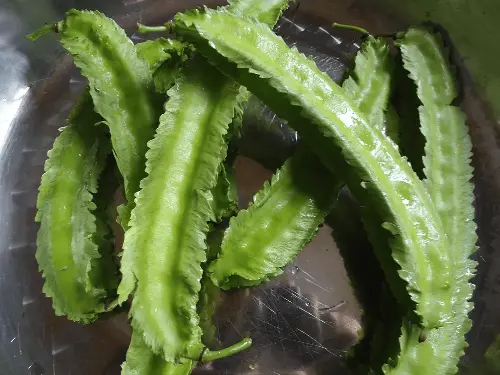
Sigarilyas grows abundantly in hot, humid conditions and even in the tropics with high rainfall.
The pods are most commonly consumed and used for regional dishes like ginataang sigarilyas, which uses coconut milk, usually with shrimp or other proteins. It can also be simply stir-fried, sauteed, or made into the spicy gising-gising.
Rich in vitamins, minerals, fiber, and protein, sigarilyas is said to help in treating hypertension and can help boost one’s immune system.
Kamias
Kamias, or bilimbi, is another underrated sour fruit that adds a distinct sourness to Filipino dishes and soups. Often used in savory stews and soups like sinigang, it is also used in fish dishes like paksiw na isda, pinangat, or ginisa dishes.

It can even be made into a condiment like a chutney or relish as a side dish, or enjoyed on its own with salt.
Saluyot
Saluyot, also known as jute, has been naturalized in the Philippines and is common in Ilocos and other northern regions.
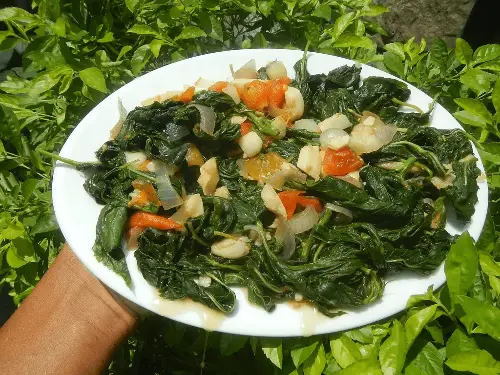
The nutrient-rich saluyot leaves are also known for their slimy texture and are used in the Ilocano vegetable stew dinengdeng to add thickness and nutrition. Aside from using it in other stews and broths, saluyot can be used for adobong saluyot, paksiw na saluyot, ginisang saluyot, and Pampanga’s bulanglang vegetable stew.
Patani
Patani, or lima beans, are believed to have originated in Central and South America, dating back over 4,000 years. Likely introduced to the Philippines during the Spanish colonial period, over time, it has become a local staple, especially in areas with fertile uplands.
In the Philippines, patani is cultivated in cooler, mountainous regions like Benguet, Nueva Ecija, and parts of Western Visayas. It is often grown in backyard gardens and local farms, especially in Ilocos.
Common dishes include ginisang patani, sautéed with garlic, onions, and tomatoes, and sometimes pork or shrimp, and patani na ginataan, found in Visayan and Bicolana households. Some even add patani to sinigang and dinengdeng. Patani can also be used as a filling for lumpia.
Alugbati
Alugbati is a leafy, slightly slimy green that often goes unnoticed but packs a lot of nutrients. Commonly used in ginisa (sautéed) dishes or sinigang, it offers a slightly earthy flavor and is loaded with vitamins A and C and iron.

Also called Malabar spinach, it is native to tropical Asia and Africa. It grows abundantly in the Philippines, especially in the Visayas and Mindanao.
Households usually cook ginisang alugbati, sometimes with eggs, sardines, or tofu; or they add it to sinigang, Visayas’ vegetable soup laswa, and Mindanao’s law-uy.
Tamarind
The tamarind or sampaloc tree can be found in many regions (Central Luzon, Ilocos, and Batangas) where the sour fruit is the star of many Filipino dishes.

Aside from its most popular use in all types of sinigang, others use tamarind for sugary sweet-sour candy, as a glaze or marinade for grilled meats or inasal, as a dipping sauce or salad dressing, or as a refreshing juice with water and sugar.
Katmon
Rounding out the listing in 10th place is the hidden Filipino fruit katmon (elephant apple), which is endemic to the Philippines — it is a native tropical fruit tree found in rural areas in Luzon, the Visayas, and parts of Mindanao, commonly found in provinces like Quezon, Aurora, and Samar.
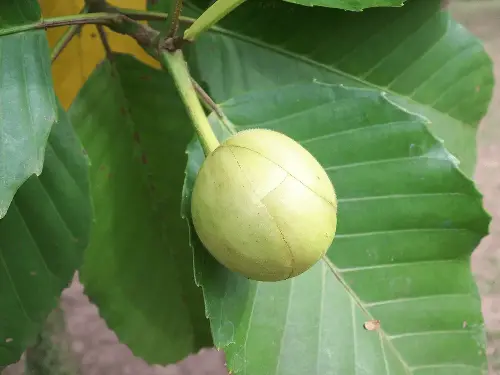
The katmon fruit looks like a small green apple and has a soft, pulpy texture with a naturally sour and floral flavor, so it is used as a souring agent for sinigang and kinilaw. It can be turned into katmon juice as well as jams, chutneys, and preserves.
Honorable mentions on the list include tanglad (lemongrass), pako (fern), and palapa, as well as fruits like santol, kaimito, and sampinit (mulberry). Ube, takway (arrowroot), mustasa (mustard leaf), taro/gabi, kadios (pigeon pea), papaya, and banana blossoms were also mentioned.
Which ingredient do you think should also be on the list? – Rappler.com
